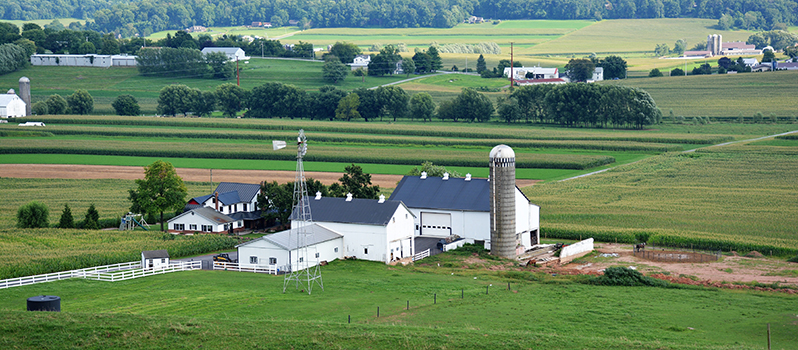
Underwriting FAQ: How to Insure a Multiple Family Farm
By Melissa Stream, Underwriting Consultant
Risks must be evaluated on a case-by-case basis, and there can be multiple ways to cover each risk. This is especially true when insuring multiple family farms, but we have some tips to help.
From an underwriting perspective, it is important to understand the risk being insured. Often, more information is needed from the insured to ensure the risk is properly written. When I’m contacted by an underwriter for a multiple family farm, I note all the details to better understand the entire risk, before deciding how the policy should be written.
One of our goals is to ensure the company is not providing any unintended coverage. Another is to verify that all the forms work together depending on the type of farm policy being written. Both are particularly important if liability coverage is being provided.
There are four questions that will help underwriters determine coverage for multiple family farms:
- Who owns what?
- Who gets the check?
- Who needs products liability coverage?
- Who has coverage elsewhere?
Who Owns What?
Identify all individuals who have any type of insurable interest in the farm. This includes land, dwellings, farm buildings and farm personal property.
Determine where all of the individuals live and what their insurable interest is.
Determine all “household” members of all households being insured (including adult children, live-in unmarried partners or other unrelated residents and hired help) – are there any household members who are not an “insured” by policy definition? If yes, do they have their own liability coverage?
Identify if there are any other legal entities involved in the farm, such as a corporation, partnership, LLC, LLP, trust or life estate. This is important to know if farm proceeds are paid to an entity that will help answer the questions “Who Gets the Check?” and “Who Needs Products Liability Coverage?”
Who Has Coverage Elsewhere?
Determine if anyone (individuals or other legal entities) has other insurance coverage in force, especially for liability. You don’t want to duplicate coverage for those who may already have it on their primary policy, such as personal liability.
Ensure the primary liability form being used matches the liability coverage that is intended, for example, GL-2 farm personal liability or GL-610 farm premises and operations. Only an individual can be the named insured on a policy using GL-2, but an individual or entity can be named insured on a policy using GL-610. The GL-610 does not provide personal liability, but if needed, the GL-9 endorsement can be added for individuals. A previous MMM article explains this here.
Make sure you are not providing any unintended coverage, for example, you should not use a personal liability form for a named insured that is a trust.
When adding additional insureds, make sure the proper endorsement is used to provide the intended coverage. For example, you don’t want to provide personal liability for a legal entity, so avoid using GL-72. The endorsement should also be one that works with the liability form (check the lead-in language of the endorsement and/or the program’s flowchart.) If the insured requests that the lessor of leased land be listed as an additional insured, the coverage language should only apply when the insured is renting/leasing the land and only when the named insured is legally liable. Be sure to address both their property and liability insurable interests.
If issuing multiple policies for the same insured and/or farming operation, be careful that you are not knowingly (or unknowingly) putting the company at risk of “stacking” of multiple liability limits for a single occurrence. It’s cleaner and clearer to put all liability on one policy.
These are just a few tips an underwriter needs to consider when insuring larger multiple family farms. If you have any questions, please contact Melissa Stream or Sherry Taylor.
